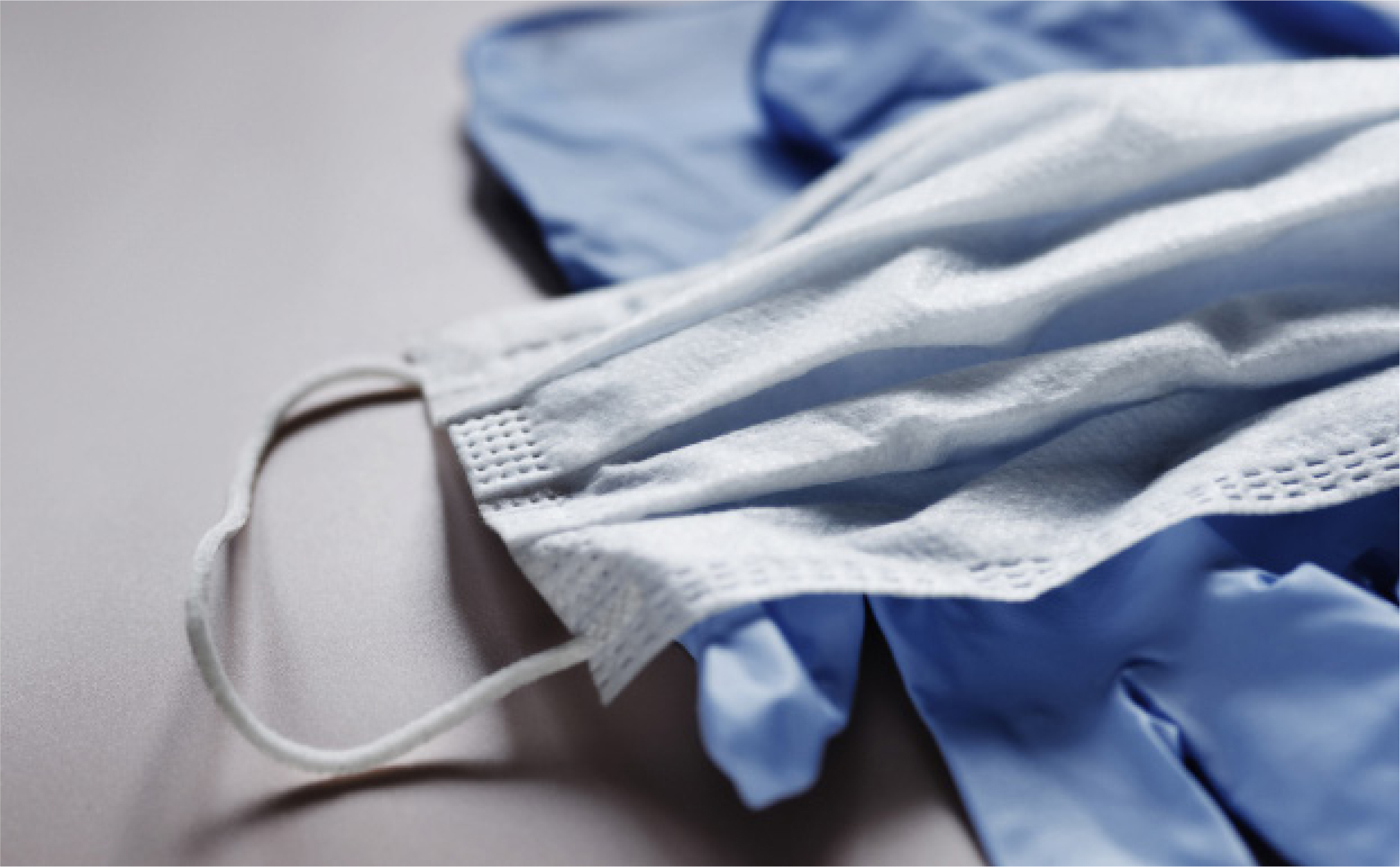
 In the context of COVID-19 and personal protective equipment, the aesthetic practitioner's approach to risk is what informs decision-making and determines choices
In the context of COVID-19 and personal protective equipment, the aesthetic practitioner's approach to risk is what informs decision-making and determines choices
This year, several organisations have released ‘return to practice’ guidance in support of aesthetic practitioners returning to work after a national lockdown necessitated by the COVID-19 pandemic. An important part of this work relates to personal protective equipment (PPE) requirements. Many are now 3 months into working in this challenging environment, and the Journal of Aesthetic Nursing (JAN) has requested an update on this equally challenging area of PPE.
The basic requirements for PPE—mask, faceguard, apron and gloves—are understood and self-explanatory. Guidance builds on this, and the information is readily available. A recent article in published in JAN by Sally Taber discussed professionalism in cosmetic practice (Taber, 2020), and it seems reasonable that what might also be useful is to consider how we, as regulated health professionals, determine and make use of PPE. Therefore, this article is not about the substance of PPE, but rather the behaviours of professional practice that inform decision-making in relation to it.
Many will remember the period of lockdown ‘easing’ and the difficulties experienced by unregulated practitioners who were keen to return to work. In most examples, vociferous calls to the Government were justified by their experience in working with PPE. My personal experience is that such practitioners are indeed rigorous in their use of PPE. They have a thorough knowledge of health and safety requirements, they are commonly licensed and inspected and, to this extent, their concerns were understandable. However, differentiating ourselves as regulated professionals requires us to work at a higher level and, in so doing, to demonstrate it, particularly during the COVID-19 pandemic, where members of the public require a healthy level of confidence in us. Importantly, this higher level of practice is also an assurance to regulators and to the Government, informing and influencing their decision-making in relation to us and allowing us to justify the trust that our registered status commands. Indeed, the Joint Council for Cosmetic Practitioners' (JCCP) (2020) guidance was shared with the professional regulatory bodies and with Government colleagues prior to publication to ensure its accuracy and compliance with national policy directives that were in place at that time, representing a positive step to this end. This trust in our profession is expected by us but is earned as much as it is given. This is why we have a duty as individuals to protect the reputation of the medical aesthetics profession as a whole. It is also why we are entitled to feel let down if standards are lowered by a significant minority.
» Lip treatments, or any involvement of the mouth, must always be considered a high-risk treatment. Combined treatments that involve the lips and other areas are probably the highest risk by virtue of time exposure «
In the context of COVID-19 and PPE, our approach to risk is what informs our decision-making and determines our choices. Both risk assessment and risk-benefit analysis are the tools we use to meet our health and safety requirements, and, sometimes, subconsciously in response to an ongoing dynamic of changing and interrelated factors. Risk assessment can represent a snapshot in time, but it is the understanding of this dynamic that enables us to reduce risk, maintain public confidence and demonstrate a higher level of practice.
The environment
In the broadest, statistical view of the industry and of the pandemic, it would probably serve us all well to consider that we are treating COVID-19-positive patients, and that this risk can only be partially mitigated through a triage process. The level of risk varies across the country, and it is clear that a treatment undertaken in the north of England is currently a higher threat than one in the southwest. We should all be aware of our local data, or that which is local to the patient, and use it to guide our choices. Of course, local lockdown restrictions are the most prominent indicator of risk, but our familiarity with local data should extend to its changing nature, permitting us to pre-empt increasing risk and allowing us to help avoid local restrictions.
The patient
Different practices may have different patient demographics. Perhaps controversially, it is understood that, at present, patients in their late teens or early 20s represent a higher risk than other age groups. This statistic should not influence decision-making, but it should influence our line of questioning.
According to a number of factors, I categorise my clients into three levels of risk: low, medium and high. The low-risk, ‘COVID-19-aware’, group tends to avoid unnecessary contact or take unnecessary risk. People in this group routinely wear masks in public, keep a social distance and follow Government guidance. They do not live with high-risk individuals or work in high-risk environments.
Those at medium risk are still typically COVID-19-aware, taking sensible precautions when they can, but are unable to avoid higher risk situations. A nurse in a care home who has COVID-19-positive patients is a good example. The important question in this example, and one that might change the risk profile entirely, is testing. The risk for a care home worker who has regular and recent negative COVID-19 antigen (swab) tests is significantly mitigated.
Those at high risk are, to my mind, less COVID-19-aware. From the perspective of the informed and objective healthcare professional, they take risks that are not conducive to safety. This may be born out of ignorance, a desire for normality or a sense of social need that outweighs COVID-19 concern. Whatever the reason, the aesthetic professional can consider the benefit of information and education, but such patients are rarely candidates for treatment.
The treatment
Duration and proximity are the enemy in the struggle against COVID-19, and respiratory droplets are the primary ‘vector’ of transmission. Therefore, treatments that take longer and those nearest the patient's respiratory tract carry a higher risk.
With this in mind, all facial treatments, when approached from the front, become high-risk. However, the risk can sometimes be mitigated. Upper face treatments, for example, most treatments with botulinum toxin, can be performed with the patient's mask (or face covering) in situ, considerably reducing risk. Conversely, lip treatments, or any treatment involving the mouth, must always be considered a high-risk treatment. Combined treatments that involve the lips and other areas are probably the highest risk by virtue of time exposure.
Risk-benefit analysis
Having pieced together a risk profile, it can be set up against the benefits to assist both parties in determining the wisdom of and justifying the decision to proceed with treatment. In the context of PPE decision-making, the following brief example is useful: a 20-year-old carefree and highly sociable student attends a practice in the north of England to request dermal filler lip augmentation. This example immediately suggests an extremely high-risk scenario, and, in the absence of further mitigating information, it would be difficult to justify proceeding to treatment as an outcome of risk-benefit analysis. Purely cosmetic indications inherently present us with a lower level of benefit than those that are medically related.
However, this same demographic of patient attending for a treatment to the lips for reversal of vascular occlusion, while representing no lesser risk, leads us to a different conclusion. We proceed to treatment after a cautious review of our PPE options. We consider our options of additional coverings, and perhaps use a FFP3 mask, rather than FFP2, and we make a decision that, should it be required of us, we can justify.
Summary
The word ‘probably’ is used on occasion through this discussion, and I am mindful that, as professionals, we are more familiar with an evidence-based approach to practice. How much does a face covering versus a CE-approved type II surgical mask, when worn by the patient, reduce risk of COVID-19 transmission? This question is one of many that cannot currently be answered. However, we can make informed decisions, supported by peer review, given the increasing data we have available.
This comment aims simply to share a way of thinking and an approach to decision-making that peers might find useful and which, on the whole, hopes to help us protect the public and maintain the credibility of both our industry and our profession.



